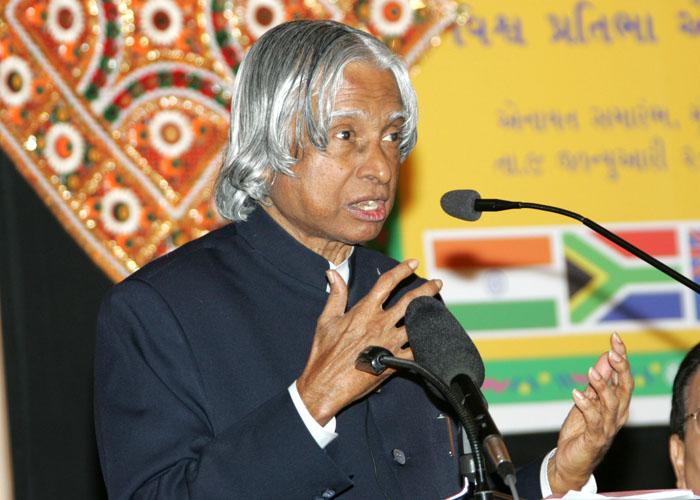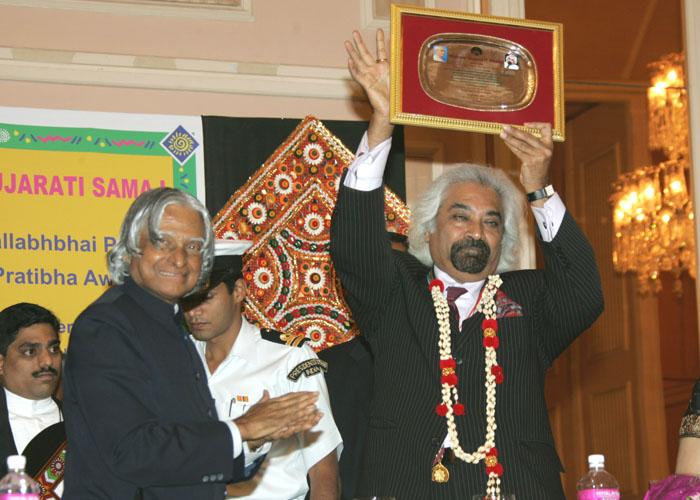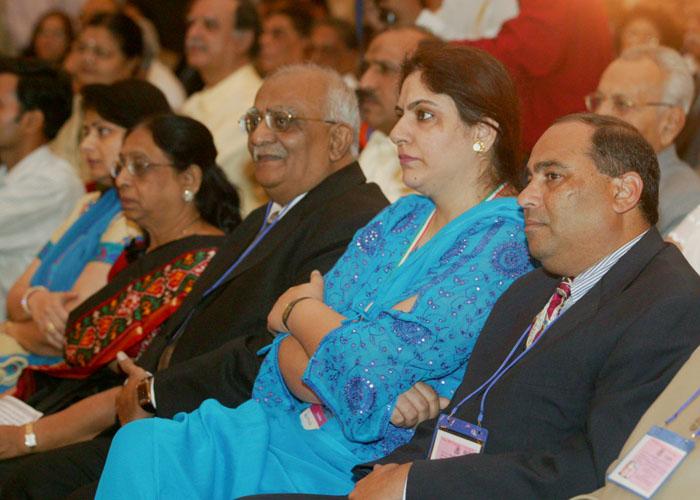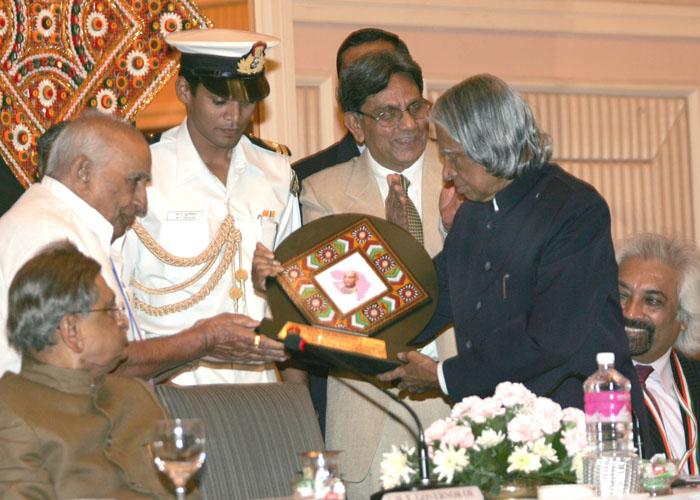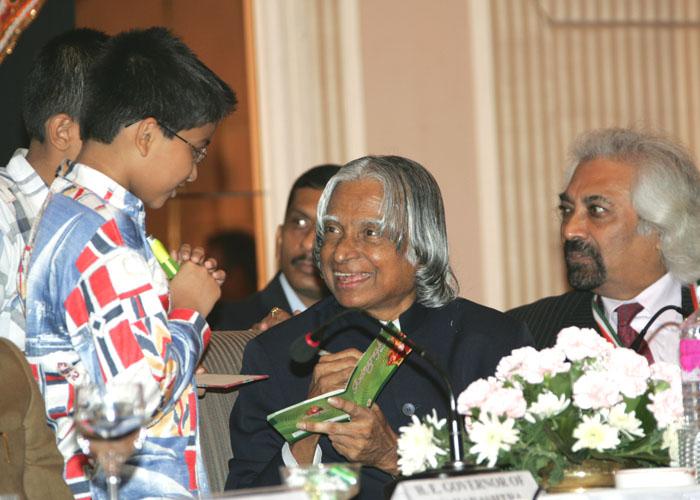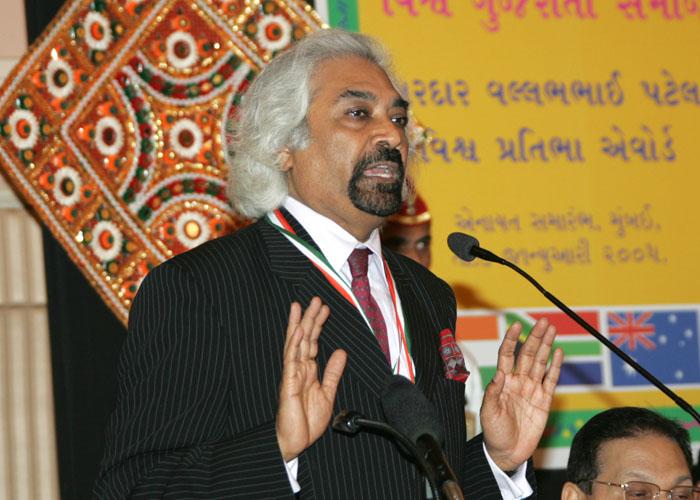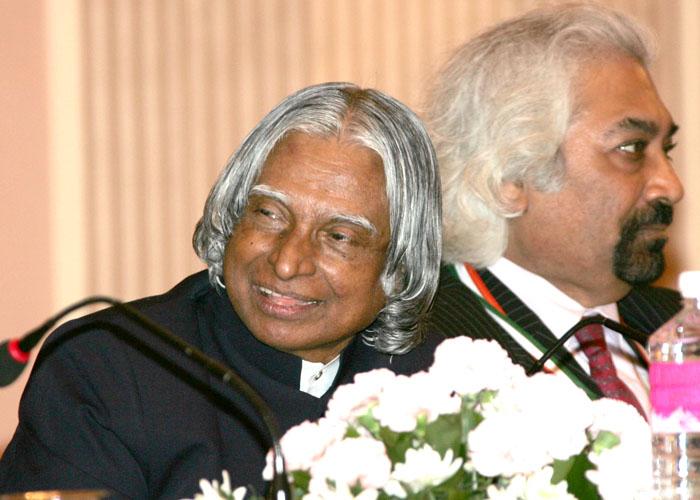Address At The Conferment Of The Sardar Vallabhbhai Patel Vishwa Pratibha Award, Mumbai
Mumbai : 09-01-2005
"Birth of Knowledge Society"
I am delighted to participate in the conferment of Sardar Vallabhbhai Patel Vishwa Prathibha Award for the year 2004 to Dr. Sam Pitroda who is a well known technocrat and administrator known for his societal missions. I congratulate Dr. Sam Pitroda and greet the organizers, social scientist, academicians and distinguished guests.
Dr. Sam Pitroda has made pioneering work in the area of telecommunications, he also shifted paradigms: he made the case that telecommunications ? along with substantial food, clean water, and adequate shelter ? were a fundamental component in the process of modernization. By introducing small, rural exchanges to India, he brought the telephone to some of the world?s most previously isolated region. He also made the case that accessibility, not density, should be the focus of the implementation of telecom. By providing public access ? the bright yellow STD PCO boxes on the road sides villages you encounter in India are a manifestation of his efforts ? Dr. Pitroda revolutionized the state of telecommunications in India ? and provided a model for other developing nations.
In this function, I am thinking what thoughts that I can share with you. I would like to discuss with you on ?Birth of Knowledge Society?.
Growth of ICT
We have seen that the growth of IT and telecommunication in India has established that the data transformed into information has a business proposition which has given a competitive advantage. I am sure by the end of this decade, entire India will have IT enabled services in the fields of human resource, customer interaction, finance and accounting, data search and integration, tele-education, tele-medicine and e-governance.
The Indian Software Industry
Today the IT market in India ? software and services is industry in India is nearly 16 billion dollars strong, with a domestic market of 7 billion dollars. As estimated by NASSCOM, the Indian ITES-BPO (IT Enabled Services ? Business Process Outsourcing) industry is likely to grow by about 54% to reach US$ 3.6 billion. While in the next ten years, we aim at the Nation's GDP to be doubled, the software industry's contribution is expected to increase at least 10 folds. Software industry is becoming a formidable component of the nation's wealth, a position that the nation can be proud of.
Tremendous market potential that exists in our country in the area of tele-education, tele-medicine, info-tainment, e- governance etc., need to be explored and encashed. If IT touches every one of the billion Indians, the IT market will be phenomenally large. This will ensure absolute robustness. But, growing the domestic market today has been left mainly to the government. I would request the Indian IT Industry to evolve a long term strategy and make thoughtful investments and grow the domestic market without solely depending on the Government. This in the long run will show that one can do IT business with social benefits and still make an economic sense. In addition our client base can be expanded actively to include the wealthiest continent- Europe, countries such as China, Korea and Japan and many other developing countries.
Competitiveness: Go up in Value Chain
It is essential that the Government, Industry and the academia to take this issue of increasing the domestic IT segment through strong and sustainable use of IT for Education and Health care by bringing out a blue print. Let us look at our IT industry employing 500,000 people earning 16 billion $, which is one percent of the world market, from another perspective. An International Software company with 50,000 employees earns 20 billion $ through its world wide operations.
In current trend, if we have to reach 80 B$ we may have to multiply our workforce 5 times which will not make our operations competitive. Hence our software industry has to move up the value chain, come up with innovative products that will sweep the world. I am confident that the Indian Industry would soon come up with such mega initiatives. A country which has seen what is networking of talents to make more than 20,000 man year projects in satellites, fighter aircraft, launch vehicles, atomic energy and missiles, can certainly think of networking of talents in our industry, research laboratories and the academia to ensure that many Indian Multinationals emerge very soon- multinationals which make products that bring per capita revenues almost ten times higher than what we do today- Today, our IT Industry is proud that 260 of the Fortune 500 companies are its clients- When we march towards the Developed India, I would like the IT Industry to lead the march by proclaiming that "260 of the Fortune 500 companies are Indian MNCs"- this is my dream.
Indian Integrated ICT
While we see the stupendous growth of the software Industry, one can not forget that this has also come about with investments on Hardware of foreign origin such as almost 1.88 million PCs, over 2 Lakh hubs etc. - The rapid penetration of Cell phones and the possible standardization of "Smart Card" shows that by a proper planning, the country would find a gold mine in the hardware industry. We also think of accelerating our investment in networking and switching industry which has a great market potential in connecting the one billion people in India as well as a global market.
My belief is that relying only on Software, may not be the best strategy for the future. India should emerge as not only a "Software great" but an "ICT great" with equal strength in Software, Hardware, embedded systems design, integration, and total end to end solutions and above all injecting innovation at each stage of development. That indeed will lead to knowledge society.
The growth of ICT has paved the way for its applications in all the domains of national development such as infrastructural development, basic human needs and development, economic development and empowerment. Every nation has to find solutions to the problem of energy and transportation, water and sanitation, healthcare, agriculture, job creation and poverty reduction, education, transparency and e-governance and peace and prosperity. ICT has a role of effective interface in some areas. Now I would like to present the vision we have for India, which has been transformed into various missions that will provide integrated solutions for transforming the nation into a developed country through the application of science and technology with our core competence in ICT, Bio-technology, space technology and also large energetic and talented scientific manpower.
Road map for Developed India
To achieve the vision of developed India, we have to simultaneously progress five areas where India has core competence for integrated action: (1) Agriculture and food processing (2) Education and Healthcare (3) Information and Communication Technology (4) Infrastructure including Electric power, Networking of rivers, Providing Urban amenities in Rural Areas (PURA) (5) Self reliance in identified critical technologies. These five areas are closely inter-related and if progressed in a mission mode will lead to food security, economic prosperity, social welfare and national security.
The Mission of PURA
The number of PURA units for the whole country is estimated to be 7000. This envisages integrated connectivities to bring prosperity to rural India. These are - physical connectivity of the village clusters through quality roads and transport; electronic connectivity through tele-communication with high bandwidth fiber optic cables reaching the rural areas from urban cities and through Internet kiosks; and knowledge connectivity through education, vocational training for farmers, artisans and craftsmen and entrepreneurship programmes. These three connectives will lead to economic connectivity through starting of enterprises with the help of banks, micro credits and marketing of the products.
Each PURA cluster will connect about 20 -30 villages depending upon the region and population and will cost about Rs.100 crores. This is a viable and sustainable business proposition. After initial short-term employment during construction etc., we have to plan for initiating actions for providing regular employment and self employment opportunities in nationally competitive small enterprises in agro processing, manufacturing and services sectors for about 3000 people. If the industrial/business parks are marketed well, they can generate employment opportunities in support and services sector for about 10000 people. This will provide sustainable economy for the rural sector. In this national mission, bankers can promote entrepreneurship in the rural areas. This will lead to the removal of urban-rural divide.
Knowledge powered Rural Development
Knowledge powered rural development is an essential need for transforming India into a knowledge power and high bandwidth rural connectivity is the minimum requirement to take education, health care and economic dynamism to the rural areas. Knowledge society leading to knowledge super power can prosper and survive only in the environment of economic security and internal security. Nation has to work for transformation into 'developed India'. Road maps on certain areas have been generated where we have to work for. PURA will show how electronic connectivity can be used to reduce the load on physical transport network. For example, if you can find that you can book your railway tickets through the web in a secure and reliable way, you will not have to take the car or scooter and go to the railway station. Many day to day activities that require you to commute can be done electronically, even generating a new breed of workers- particularly in our Women - who telecommute.
Core competence for Knowledge Society
Knowledge has always been the prime mover for prosperity. A knowledge society is one of the basic foundations for the development of any nation. Knowledge has many forms and it is available at many places. The acquisition of knowledge has therefore been the thrust area throughout the world and sharing the experience of knowledge is a unique culture of our country. Digital Library is a new instrument, which can spread the knowledge nearly at the speed of light. India is a nation endowed with natural and competitive advantages as also certain distinctive competencies. But these are scattered in isolated pockets and the awareness on these is inadequate. During the last few centuries the world has undergone a change from agriculture society, where natural labour was the critical factor, to industrial society where the management of technology, capital and labour provided the competitive advantage. In the 21st century, a new society is emerging where knowledge is the primary production resource instead of capital and labour. Efficient utilisation of existing knowledge can create comprehensive wealth for the nation in the form of better health, education, infrastructure etc. for improving the quality of life. Ability to create and maintain the knowledge infrastructure, develop knowledge workers and enhance their productivity through creation, growth and use of new knowledge will be the key factors in deciding the prosperity of this Knowledge Society. Whether a nation has emerged as a knowledge society or not is judged by the way the country effectively deals with knowledge creation and knowledge deployment. One of the key areas for knowledge creation is the Digital Library.
Digital Library Initiative
As you may be aware India has a mission of digitizing million books through a digital library programme. The programme has been launched in the year 2003. This has been initiated based on a proposal by Prof. Raj Reddy of Carnegie Mellon University (CMU), Pittsburgh and Prof. N. Balakrishnan of IISc, Bangalore. Prof. Raj Reddy, an NRI has taken a special initiative of creating this programme in India, his mother land for improving the educational system in the country. This has been his passion for many years. This programme is progressing well and we have already digitized 90,000 books out of which 50,000 are already on the web http://www.dli.ernet.in. Many of the books are in Indian languages. This Digital Library of India Initiative had also become test bed for many Indian Language Technology Research including the development of Machine Translation Systems, OCRs, Summarizers and so on in Indian languages. More than 21 centres spanning academic institutions, social organizations and Government agencies including the Rashtrapati Bhavan have partnered in creating this huge repository of knowledge. This programme is fully supported by the Ministry of Communication and Information Technology. We should see how the people working in ICT areas can contribute innovatively in spreading the urge for education and knowledge among our rural masses through village knowledge centres. Thus, Panchayat Knowledge Centre will emanate.
Establishing Village Panchayat Knowledge Centers
India has approximately 2.3 lakhs Village Panchayats. I visualize establishment of village knowledge centers in these Panchayats to empower the villagers with the knowledge and to act as a nodal center for knowledge connectivity for the villagers. Initially 100 remote Panchayats may be chosen for the Model Pilot project. Based on this experience, it will be possible to replicate Village Panchayat Knowledge Centers in other Panchayats.
This Center will be equipped with 1000 books of different subjects. In addition it will have a computer terminal, telephone connections, Modem, Printer, Photocopier, camera, Scanner, Internet connection and other support facilities for functioning as a digital library. The knowledge center will provide hard copies of relevant pages to the members of the village, if required. Also the center can have facility for reading the text with an audio output so that people who are unable to read, can benefit from the library. The knowledge center can also be used for collection, digital storage and dissemination of village specific information pertaining to agriculture, craftsmanship, arts, artisan techniques, informal judicial system practiced in village based on values, local remedies for simple ailments, village stories with moral values, village history, village folk songs, village cultural traditions, traditional medicinal practices followed in villages and village marketing information and methods. Such information presently is being transmitted through word of mouth and with changing generation, it is being lost.
It is essential to preserve and carry forward this knowledge base for the benefit of future generations. This village panchayat knowledge centers will become a helpdesk and confidence builder for the villagers. In course of time, there could be inter panchayat information transfer leading to assured information flow to the needy. This Village Panchayat knowledge center will also act as an e-governance nodal point for the villagers. The cost of establishing and running the hundred remote panchayat knowledge centers for three years is estimated to be Rs.11 crores (approx.). Let us work together to establish this Village Panchayat knowledge centers in 100-village panchayat?s in India.
Conclusion
IT would become potent tool in integrating the nation. The remote localities that are now feeling a sense of neglect will no longer feel so. Time and distance will be condensed to bring about a nation that is efficiently small competitive and dynamic.
Civilization that does not have the knowledge of technology or the technological nations without experience of civilization, cannot innovate newer economy. India has rich civilization and post independent India has focused itself as a technology leader in Space, Defence, Atomic Energy, Agriculture and certain areas of Industry. With IT and telecom emerging as core competence as nation, transforming India into a knowledge society, I see the developed India is not far. My new year greetings and best wishes to all you.
May God bless you.

